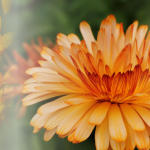Beauty Year-Round
Nowhere is it written that you can’t still enjoy your garden in the winter! Adding varieties such as these can keep your garden looking lovely through more than one season. They also provide seeds for hungry birds during the leanest months, and protected habitats for animals and insects to overwinter in. Here are a few of our favorite flowers that look stunning even in winter. Consider adding these and enjoy your garden’s beauty year-round too!
Yarrow
Yarrow seed heads maintain a dainty, flower-like appearance throughout the winter and, when covered in frost, they appear to bloom anew.
Start plants in early spring as soon as soil can be worked or indoors about eight weeks before transplanting. Lightly cover seeds with fine soil and keep evenly moist until they germinate. Transplant in spring when weather has settled.
Scabiosa
When finished blooming, the scabiosa flower forms a globe shaped seed-head comprised of little parasol shaped seeds, just as unique and beautiful as the blossom that came before.
Select a location with full sun to part shade. Prefers light shade in hot areas. Start outdoors after all danger of frost has passed. For transplants, start indoors four to six weeks before last frost. Water regularly until plants are established.
Poppies
The brightly colored petals of the Poppy fall away to reveal a bulbous seed pod topped by a lovely pizzelle-shaped crown.
Sow outdoors in early spring in a sunny area when the soil is cool, or in fall prior to first fall frost for early spring blossoms. Poppies germinate best in cool weather and well drained soil. For transplants, start indoors six to eight weeks before last spring frost. Poppies do not transplant well, so start seeds in biodegradable pots and plant the entire pot. Water consistently, but do not fertilize.
Poppies bloom profusely in cooler growing conditions, and can rebound in the fall after summer heat. They tolerate poor soil and light drought.
Note – California poppies do not form a bulbous seed head, but rather long slender seed pods.
Echinacea
Echinacea and other members of the aster family leave behind a rounded seed head, sometimes still surrounded by the remnants of petals, now withered and curled. Not only are they a lovely artifact of the summer garden that was, but they’re also a great source of seeds for winter critters.
Plants are very drought tolerant when mature, making them a good choice for xeriscape gardens.
Lunaria
Lunaria is also called the money plant because of the shimmery silver dollar shaped seed pods it forms. A light breeze, on a sunny day, will set them to sparkle like sequins.
Start indoors about six weeks before the last frost date. Lightly press seeds into the top of moist, sterile, seed-starting mix. Grow in a warm location, about 75˚. Keep moist. Transplant into a shady location in the garden after danger of frost has passed. Keep plants evenly moist throughout the season.
Umbellifers
Members of the carrot family flower in umbels (umbrella shaped) which remain an intriguing garden feature throughout the winter. The delicate up-turned umbrellas look especially nice when coated in a hoarfrost.
Carrots, celery, dill, anise, fennel, parsley, and queen anne’s lace are included in the carrot family.
You can download the Beauty Year-Round quick reference guide here.












